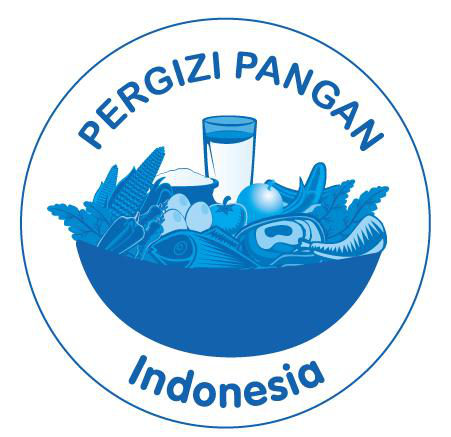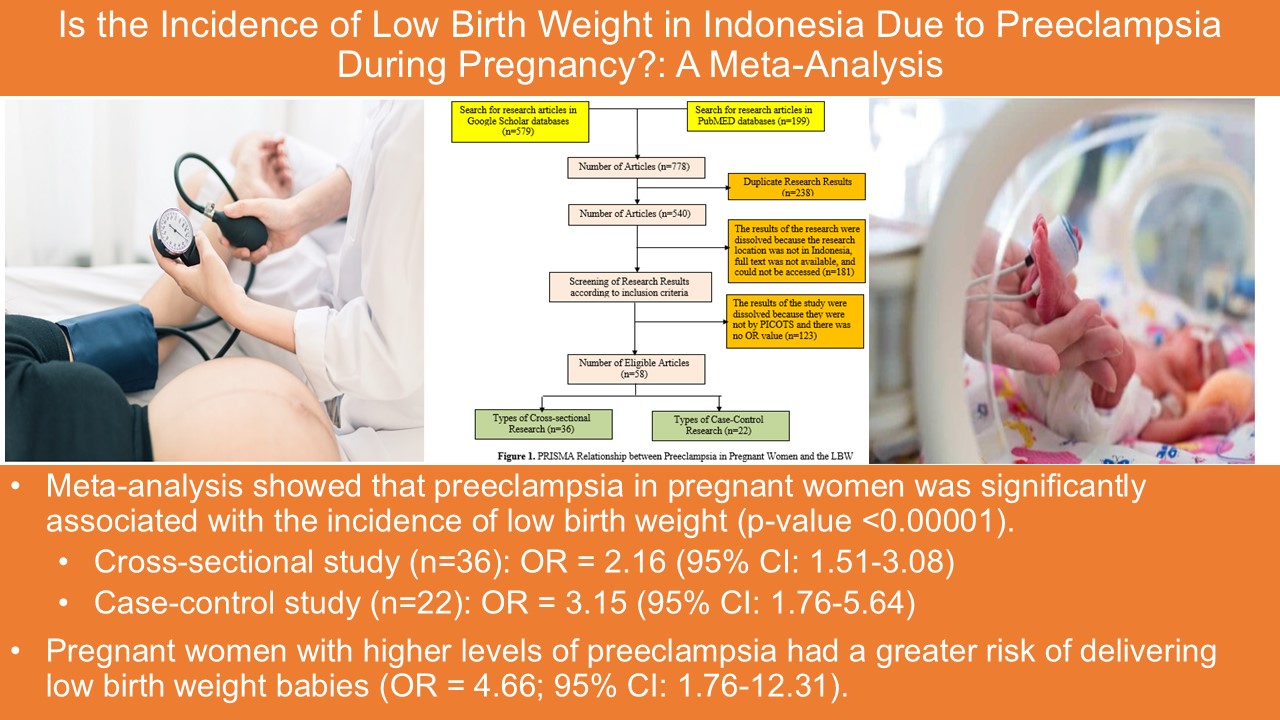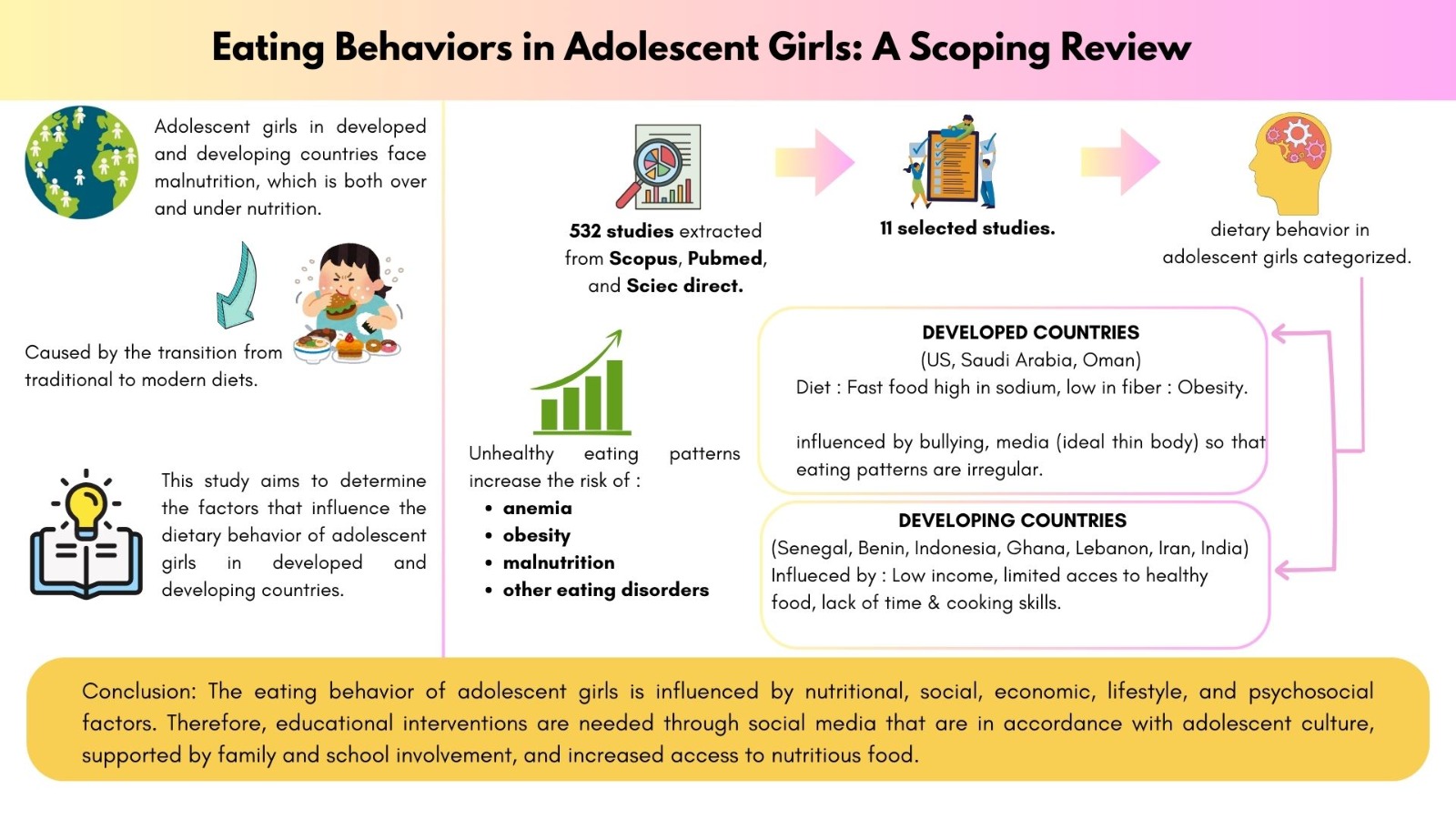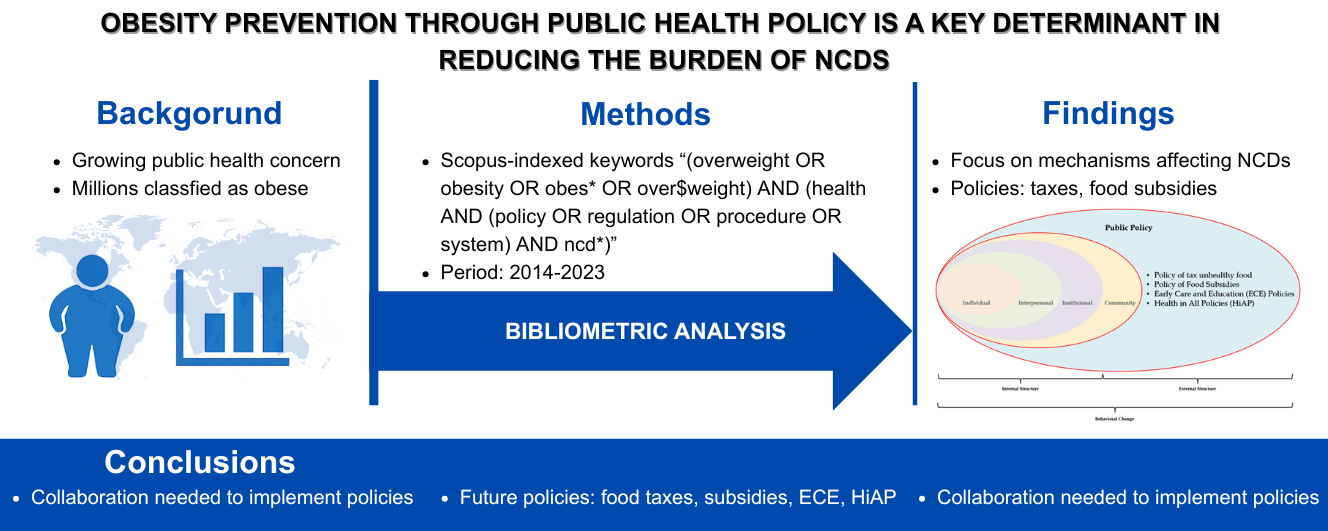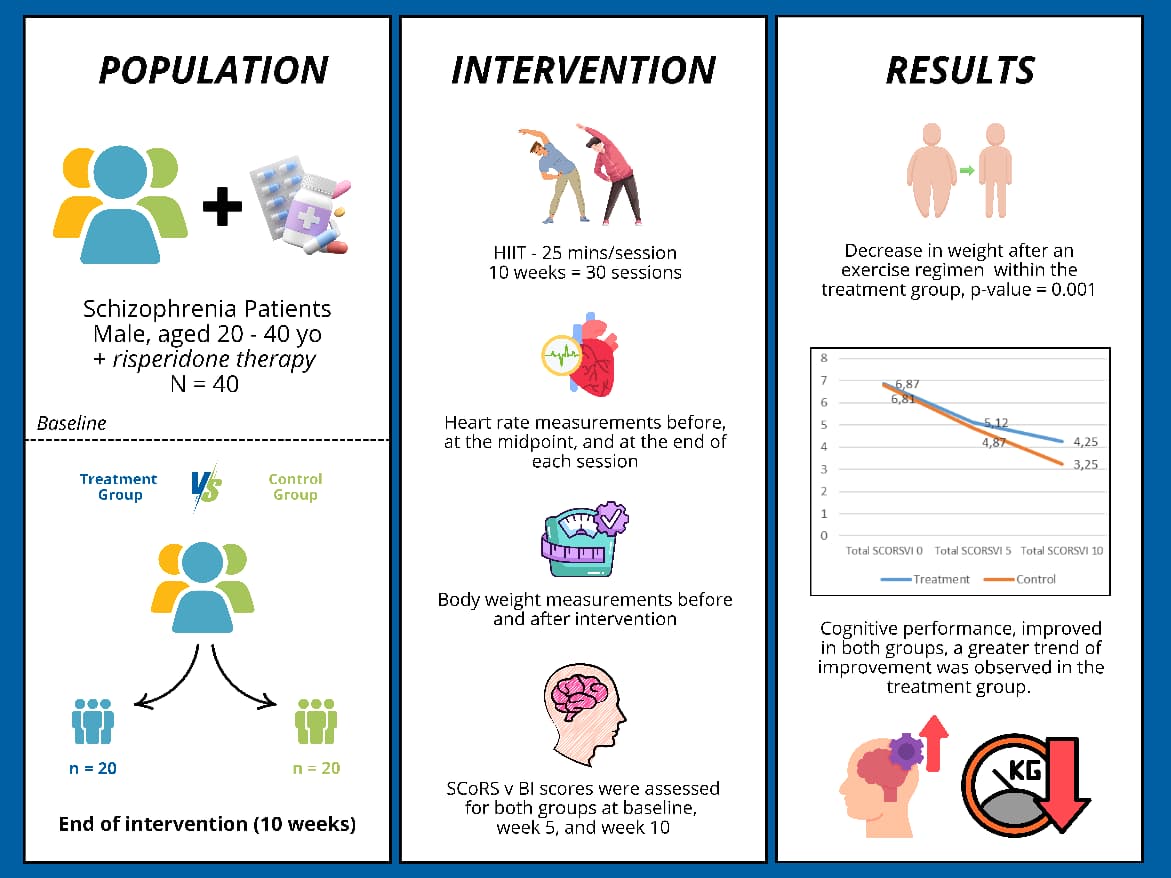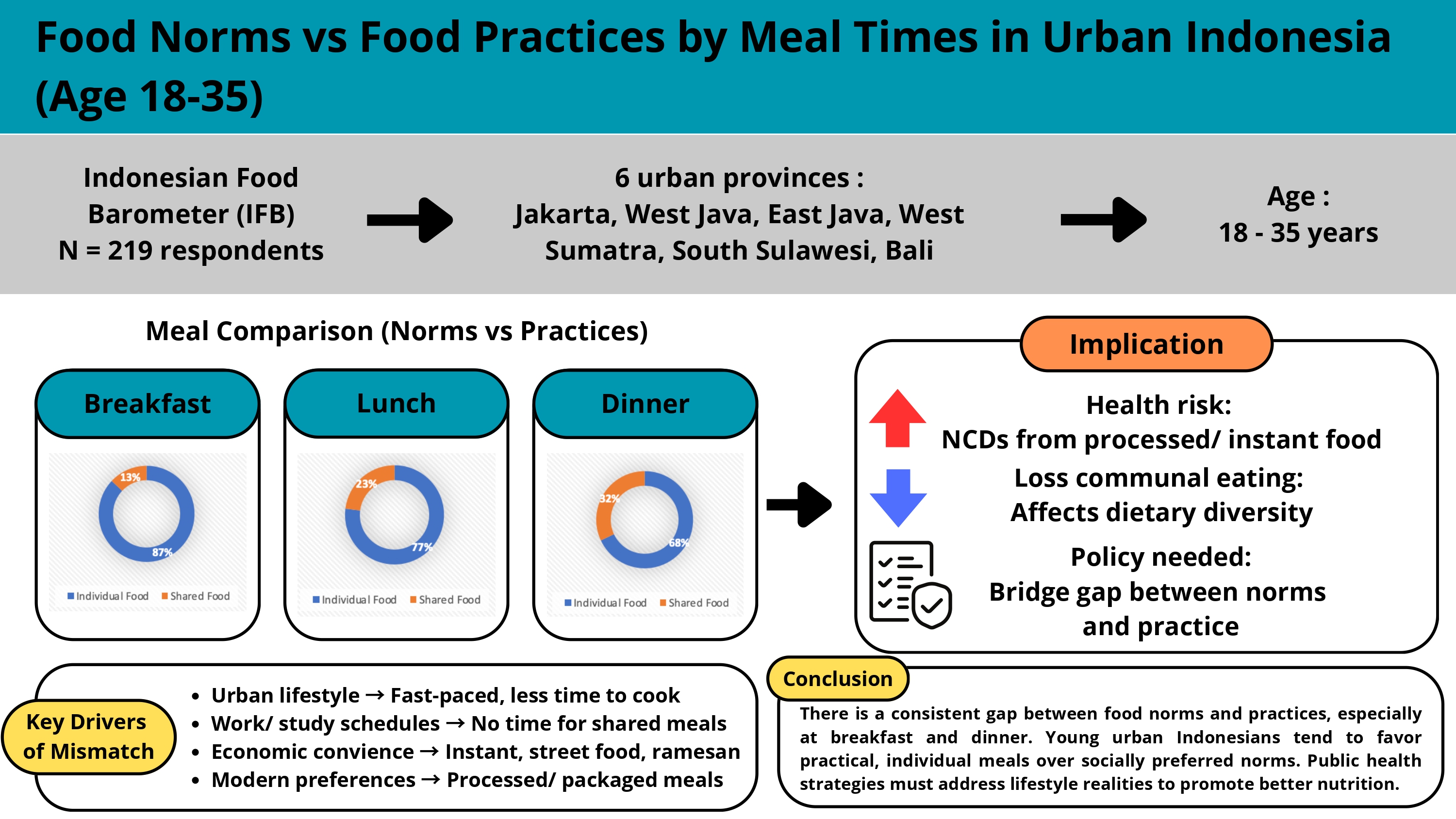EFFECTIVENESS OF THE MOM UUNG BREASTMILK BOOSTER SUPPLEMENT IN ENHANCING BREASTMILK PRODUCTION AMONG WORKING AND NON-WORKING MOTHERS
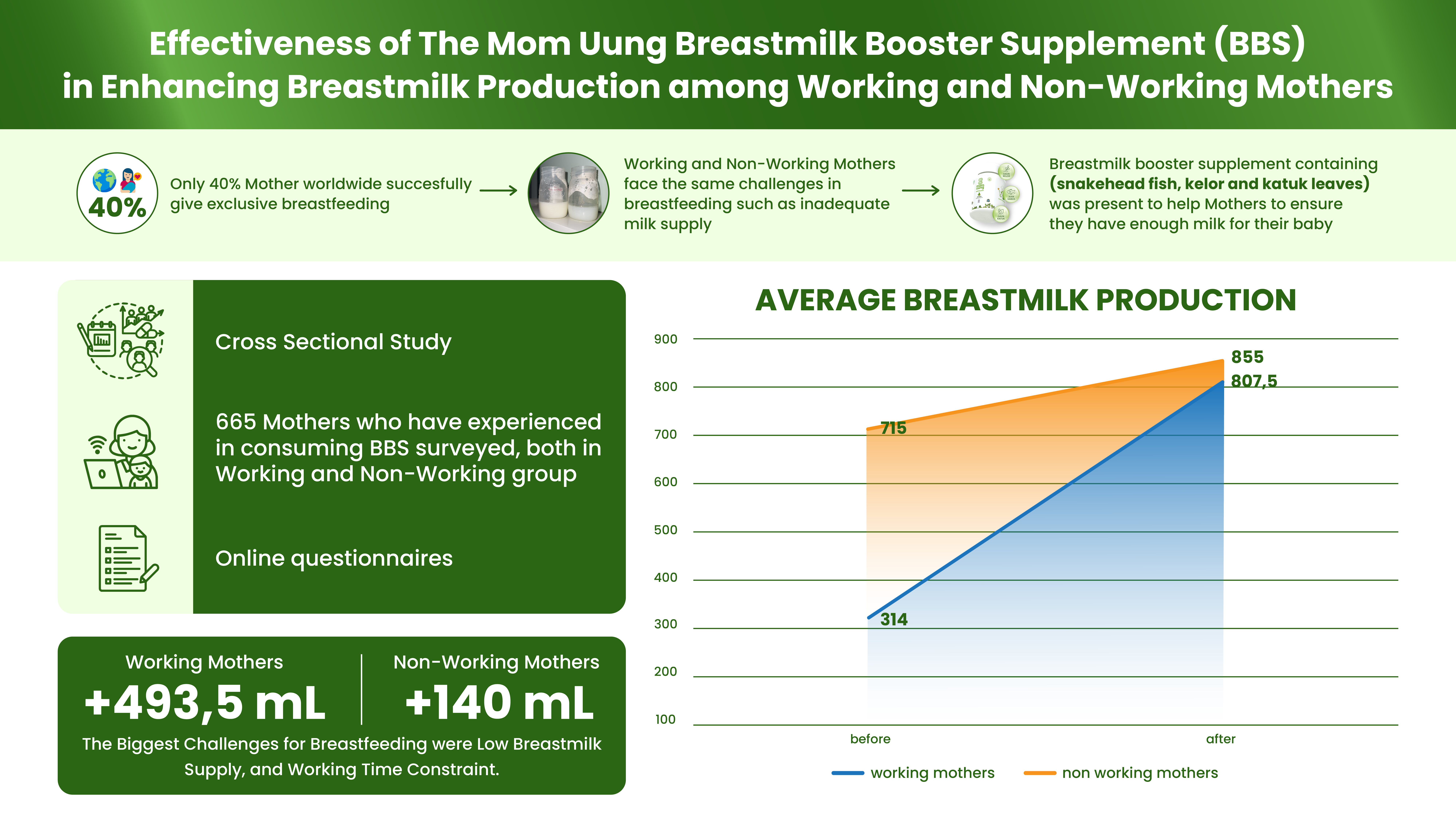
Downloads
Breastfeeding provides optimal nutrition for infants and offers significant health benefits to both mother and child. However, challenges such as perceived low milk production and workplace constraints hinder breastfeeding practices among mothers. This study evaluates the effectiveness of the Mom Uung Breastmilk Booster Supplement (BBS) in enhancing breastmilk production among working and non-working mothers. Using a cross-sectional design, data were collected from 665 breastfeeding mothers in Indonesia via a validated online questionnaire. Mothers who consumed X BBS reported increased breastmilk volume, breastfeeding frequency, and pumping efficiency, with significant improvements observed in both working and non-working groups (p<0.001). Non-working mothers demonstrated higher breastmilk production compared to working mothers. Key barriers identified included perceived low milk supply (30.3%) and work-related time constraints (11.6%). The study highlights the potential of X BBS to support breastfeeding practices and underscores the need for workplace policies that promote breastfeeding. Further research is recommended to validate these findings and objectively assess the impact of BBS on breast milk quantity and quality.
Ahmad, R. S., Sulaiman, Z., Nik Hussain, N. H., & Mohd Noor, N. (2022). Working mothers’ breastfeeding experience: A phenomenology qualitative approach. BMC Pregnancy and Childbirth, 22(1).
Australian Breastfeeding Association. (2022). How breasts make milk. Retrieved from https://www.breastfeeding.asn.au/resources/how-breasts-make-milk#:~:text=The%20principle%20of%20supply%20and%20demand&text=Whatever%20your%20baby%20drinks%20is,milk%20sitting%20in%20your%20ducts
Ashoka, A. (2006). A Comparative Study of Exclusivity of Breastfeeding and Subsequent Growth Pattern Among Working and Nonworking Mothers (Doctoral dissertation, Rajiv Gandhi University of Health Sciences (India)).
Babendure, B. J., Reifsnider, E., Mendias, E., Moramarco, M. W., & Davila, Y. R. (2015). Reduced breastfeeding rates among obese mothers: A review of contributing factors, clinical considerations, and future directions. International Breastfeeding Journal, 10.
Brockway, M., Benzies, K., & Hayden, K. A. (2017). Interventions to improve breastfeeding self-efficacy and resultant breastfeeding rates: A systematic review and meta-analysis. Journal of Human Lactation, 33(3), 486–499.
Center for Disease Control and Prevention. (2023). Breastfeeding benefits both baby and mom. Retrieved from https://www.cdc.gov/breastfeeding/features/breastfeeding-benefits.html
Chen, J., Xin, T., Gaoshan, J., Li, Q., Zou, K., Tan, S., et al. (2019). The association between work-related factors and breastfeeding practices among Chinese working mothers: A mixed-method approach. International Breastfeeding Journal, 14(1).
Cripe, E. T. (2017). “You can’t bring your cat to work”: Challenges mothers face combining breastfeeding and working. Qualitative Research Reports in Communication, 18(1), 36–44.
Flint, D. J., Travers, M. T., Barber, M. C., Binart, N., & Kelly, P. A. (2005). Diet-induced obesity impairs mammary development and lactogenesis in murine mammary gland. American Journal of Physiology-Endocrinology and Metabolism, 288(5), 1179–1187. Retrieved from http://www.ajpendo.org
Fungtammasan, S., & Phupong, V. (2021). The effect of Moringa oleifera capsule in increasing breastmilk volume in early postpartum patients: A double-blind, randomized controlled trial. PLoS One, 16(4).
Galipeau, R., Baillot, A., Trottier, A., & Lemire, L. (2018). Effectiveness of interventions on breastfeeding self-efficacy and perceived insufficient milk supply: A systematic review and meta-analysis. Maternal and Child Nutrition, 14.
Giugliani, E. R. J. (2014). Common problems during lactation and their management. Journal de Pediatria, 80.
Hapon, M. B., Simoncini, M., Via, G., & Jahn, G. A. (2003). Effect of hypothyroidism on hormone profiles in virgin, pregnant and lactating rats, and on lactation. Reproduction, 126.
Hauff, L. E., Leonard, S. A., & Rasmussen, K. M. (2014). Associations of maternal obesity and psychosocial factors with breastfeeding intention, initiation, and duration. American Journal of Clinical Nutrition, 99(3), 524–534.
Indonesia’s Ministry of Health. (2019). Cutoff table of body mass index (BMI) for Indonesian.
Khaliq, A., Qamar, M., Hussaini, S. A., Azam, K., Zehra, N., Hussain, M., et al. (2017). Assessment of knowledge and practices about breastfeeding and weaning among working and non-working mothers. Journal of Pakistan Medical Association, 67(3), 332–338.
Lawrence, R. A., & Lawrence, R. M. (2011). Medications, herbal preparations, and natural products in breast milk (7th ed.).
Loewenberg Weisband, Y., Keim, S. A., Keder, L. M., Geraghty, S. R., & Gallo, M. F. (2017). Early breast milk pumping intentions among postpartum women. Breastfeeding Medicine, 12(1), 28-32.
Lyons, K. E., Ryan, C. A., Dempsey, E. M., Ross, R. P., & Stanton, C. (2020). Breast milk, a source of beneficial microbes and associated benefits for infant health. Nutrients, 12.
McBride GM, Stevenson R, Zizzo G, Rumbold AR, Amir LH, Keir AK, et al. Use and experiences of galactagogues while breastfeeding among Australian women. PLoS One [Internet]. 2021;16(7 July):1–15. Available from: http://dx.doi.org/10.1371/journal.pone.0254049
Muda, S. M., Aung, K. T., Ibrahim, A. F., & Ismail, N. A. (2016). Breast feeding issue: a study on factors affecting termination of breast feeding among working mothers. Int J Health Sci Res, 6(9), 257-263.
Michalakis, K., Mintziori, G., Kaprara, A., Tarlatzis, B. C., & Goulis, D. G. (2013). The complex interaction between obesity, metabolic syndrome and reproductive axis: A narrative review. Metabolism: Clinical and Experimental, 62, 457–478.
Mirkovic, K. R., Perrine, C. G., Scanlon, K. S., & Grummer-Strawn, L. M. (2014). Maternity leave duration and full-time/part-time work status are associated with US mothers’ ability to meet breastfeeding intentions. Journal of Human Lactation, 30(4), 416–419.
Monge-Montero, C., Van Der Merwe, L. F., Tagliamonte, S., Agostoni, C., & Vitaglione, P. (2024). Why do mothers mix milk feed their infants? Results from a systematic review. Nutrition Reviews, 82, 1355–1371.
Ong, G., Yap, M., Foo, L. L., & Tai, B. C. (2005). Impact of working status on breastfeeding in Singapore: Evidence from the National Breastfeeding Survey 2001. European Journal of Public Health, 15(4), 424–430.
Primadhani, U. (2021). How to Increasing Prolactine Levels of Breastfeeding Mother with Consumption Katuk (Sauropus androgynous (L) Merr) Leaf. Eureka Herba Indonesia, 2(2), 100-103.
Raguindin, P. F. N., Dans, L. F., & King, J. F. (2014). Moringa oleifera as a galactagogue. Breastfeed Med, 9(6), 323-4.
Rossa, F., Lisa, U. F., Utama, B. I., Rahmi, L., & Hudzaifah, H. M. (2024). Kajian literatur efektivitas konsumsi daun kelor (Moringa oleifera), daun katuk (Sauropus androgynus laml merr) dan ikan gabus (Channa striata) terhadap kelancaran asi pada ibu menyusui. Jurnal Riset Kebidanan Indonesia, 8(2).
Sim, T. F., Hattingh, H. L., Sherriff, J., & Tee, L. B. G. (2015). The use, perceived effectiveness and safety of herbal galactagogues during breastfeeding: A qualitative study. International Journal of Environmental Research and Public Health, 12(9), 11050–11071.
Toh-Adam, R., Srisupundit, K., & Tongsong, T. (2012). Short stature as an independent risk factor for cephalopelvic disproportion in a country of relatively small-sized mothers. Archives of Gynecology and Obstetrics, 285(6), 1513–1516.
Turcksin, R., Bel, S., Galjaard, S., & Devlieger, R. (2014). Maternal obesity and breastfeeding intention, initiation, intensity and duration: A systematic review. Maternal and Child Nutrition, 10, 166–183.
UNICEF. (2011). Programming guide infant and young child feeding.
UNICEF, WHO. Global Breastfeeding Scorecard 2023 Rates Of Breastfeeding Increase Around The World Through Improved Protection And Support. World Heal Organ [Internet]. 2023;1–9. Available from: https://www.unicef.org/media/150586/file/Global breastfeeding scorecard 2023.pdf
Vandenplas Y, Basrowi RW. Breastfeeding by Working Mothers: Global Challenges. Indones J Community Occup Med. 2023;3(1):1–2.
Westfall, R. E. (2003). Galactagogue herbs: A qualitative study and review. Canadian Journal of Midwifery Research and Practice, 2(2).
World Health Organization. (2018). Breastfeeding. Retrieved from https://www.who.int/health-topics/breastfeeding#tab=tab_1
World Health Organization. (2023). Exclusive breastfeeding for optimal growth, development, and health of infants. Retrieved from https://www.who.int/tools/elena/interventions/exclusive-breastfeeding
World Health Organization, Regional Office for the Western Pacific. (2000). The Asia-Pacific perspective: Redefining obesity and its treatment. Retrieved from https://iris.who.int/handle/10665/206936

This work is licensed under a Creative Commons Attribution-NonCommercial-ShareAlike 4.0 International License.
- MEDIA GIZI INDONESIA Journal is the copyright owner of all materials published on this website.
- The formal legal provisions for access to digital articles of this electronic journal are subject to the terms of the Creative Commons Attribution-NonCommercial-ShareAlike license (CC BY-NC-SA 4.0), which means that MEDIA GIZI INDONESIA Journal and readers reserve the right to save, transmit media / format, manage in database, maintain, and publish articles as long as it continues to include the name of the Author.
- Printed and published print and electronic manuscripts are open access for educational, research and library purposes. In addition to these objectives, the editorial board shall not be liable for violations of copyright law.


2.png)














